Abstract
A major peroxidase has been found in the tomato pericarp (Lycopersicon esculentum var. Tropic) of the ripe and green fruit. A purification scheme yielding this enzyme approximately 85% pure has been developed. The tomato enzyme resembles horseradish peroxidase (HRP) in a standard peroxidase assay and in its ability to be reduced to ferroperoxidase, to be converted to oxyferroperoxidase (compound III), and to form peroxidase complexes with hydrogen peroxide (compounds I and II). In contrast to the HRP, the tomato peroxidase fails to catalyze the aerobic oxidation of indole-3-acetic acid in the presence of 2,4-dichlorophenol and manganese. The tomato peroxidase can be resolved into two nonidentical subunits in the presence of dithiothreitol while HRP remains as a single polypeptide chain after such treatment. Dithiothreitol is oxidized in the presence of tomato or horseradish peroxidase with the enzymes accumulating in their oxyferroperoxidase forms during the oxidation reaction. Whereas HRP returns to its free ferric form at the end of the reaction, the tomato enzyme is converted into a form that absorbs at 442 nanometers.
Full text
PDF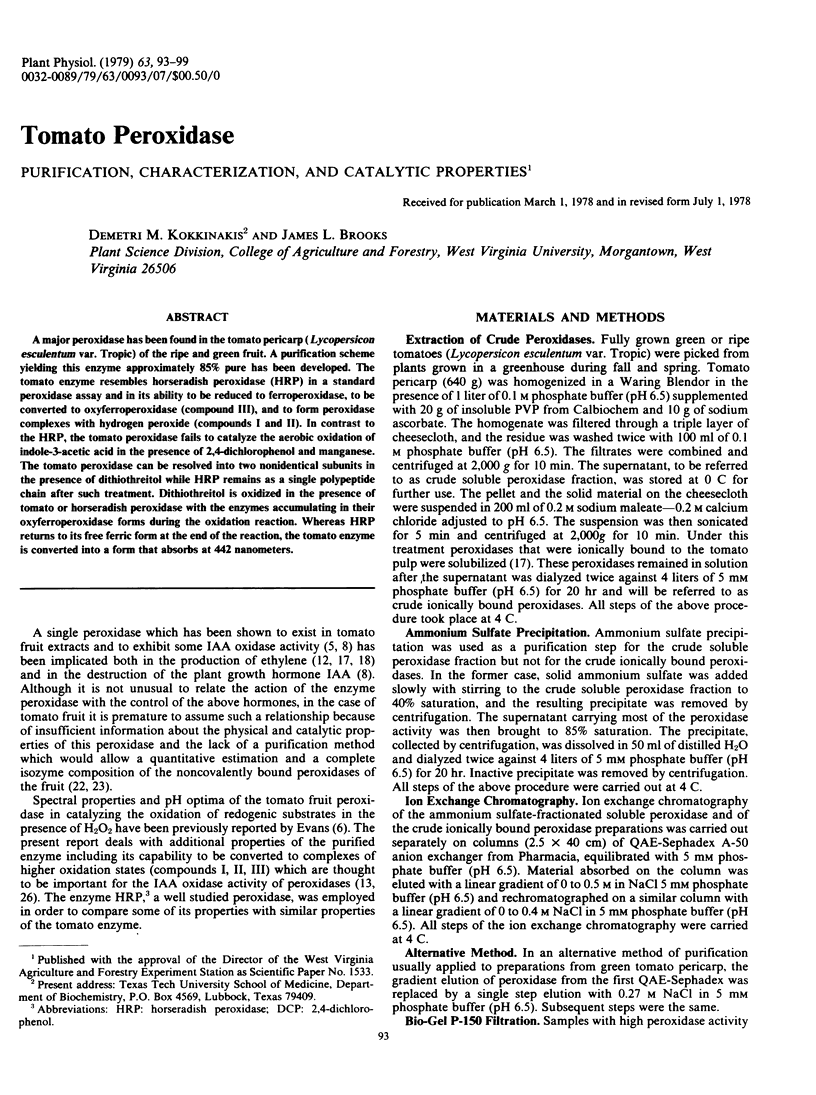
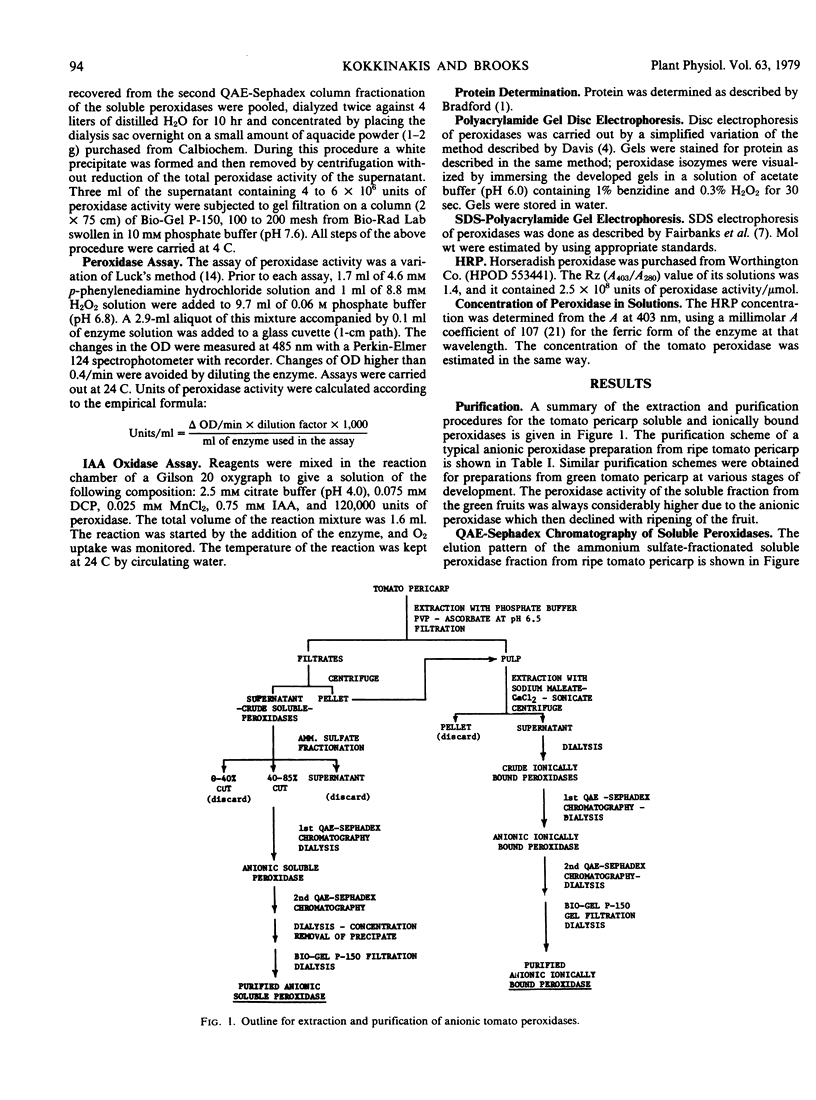
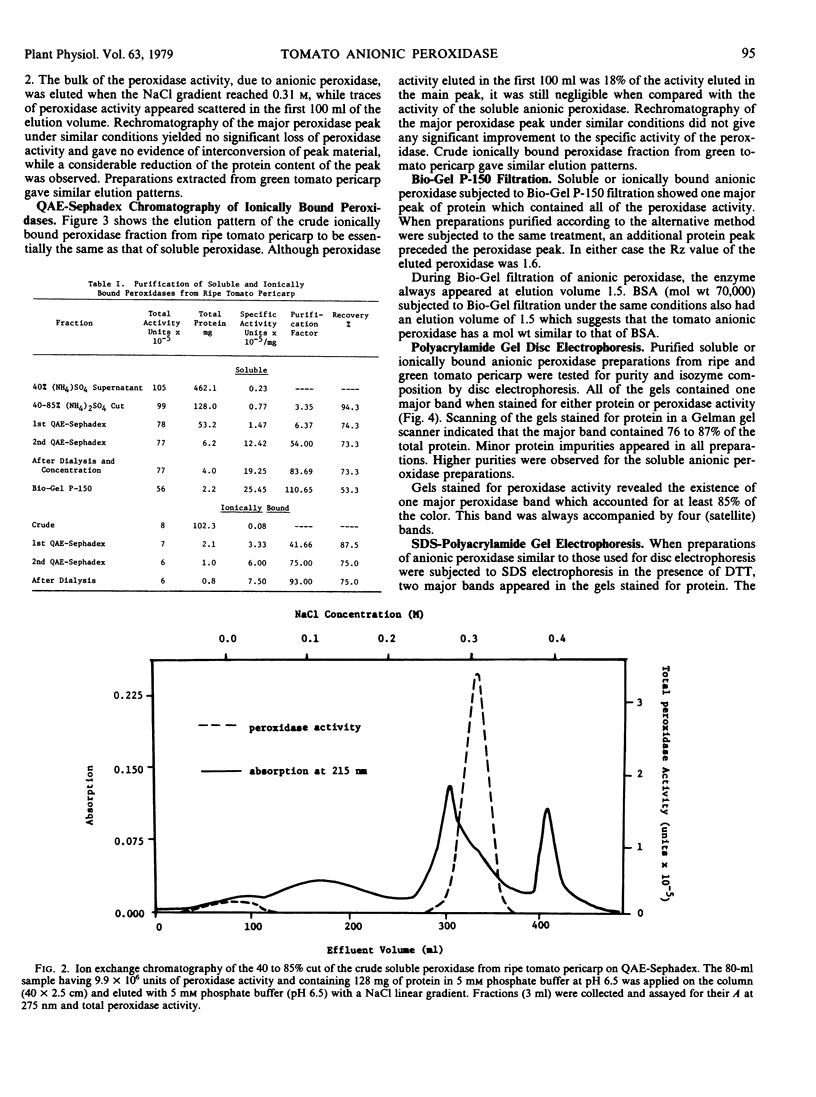
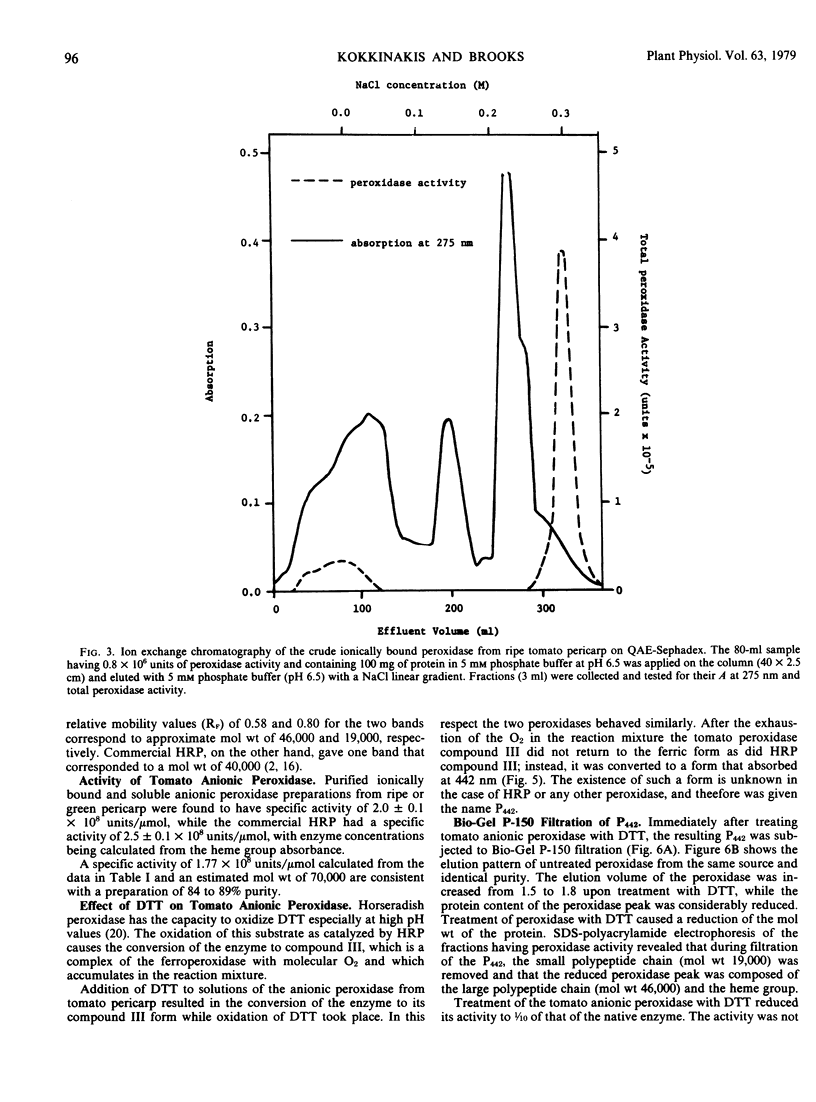
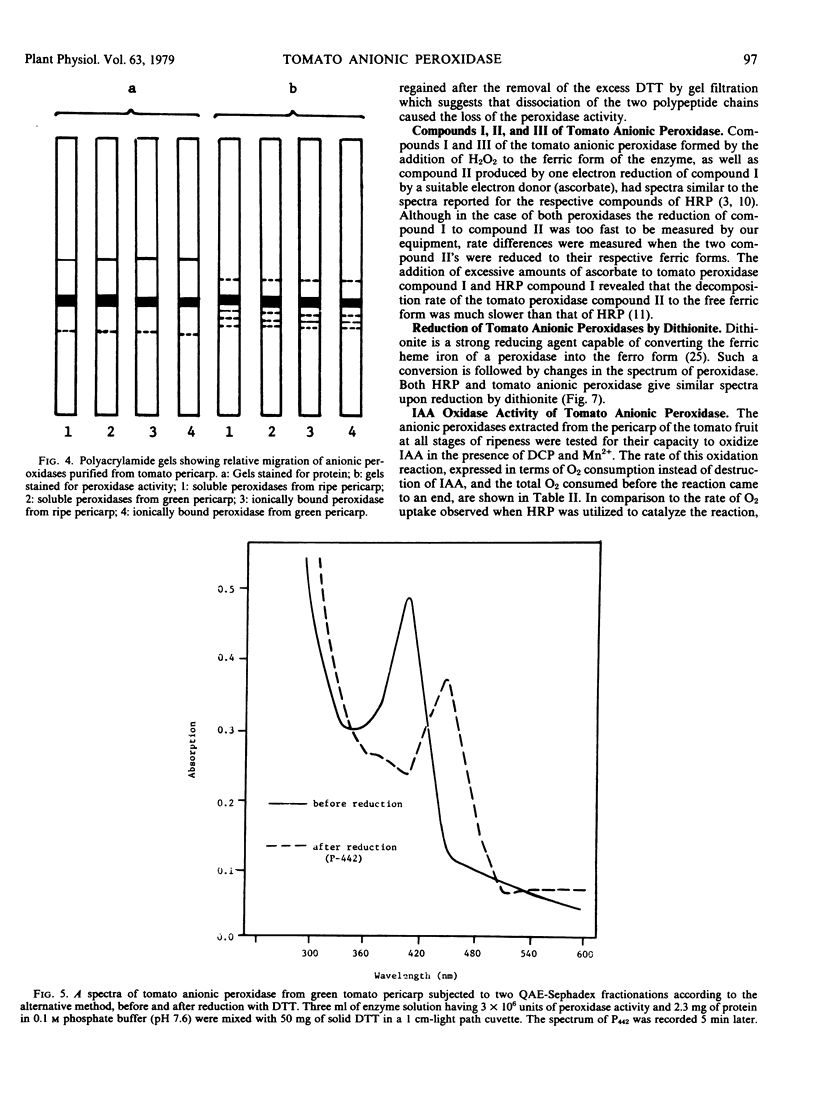
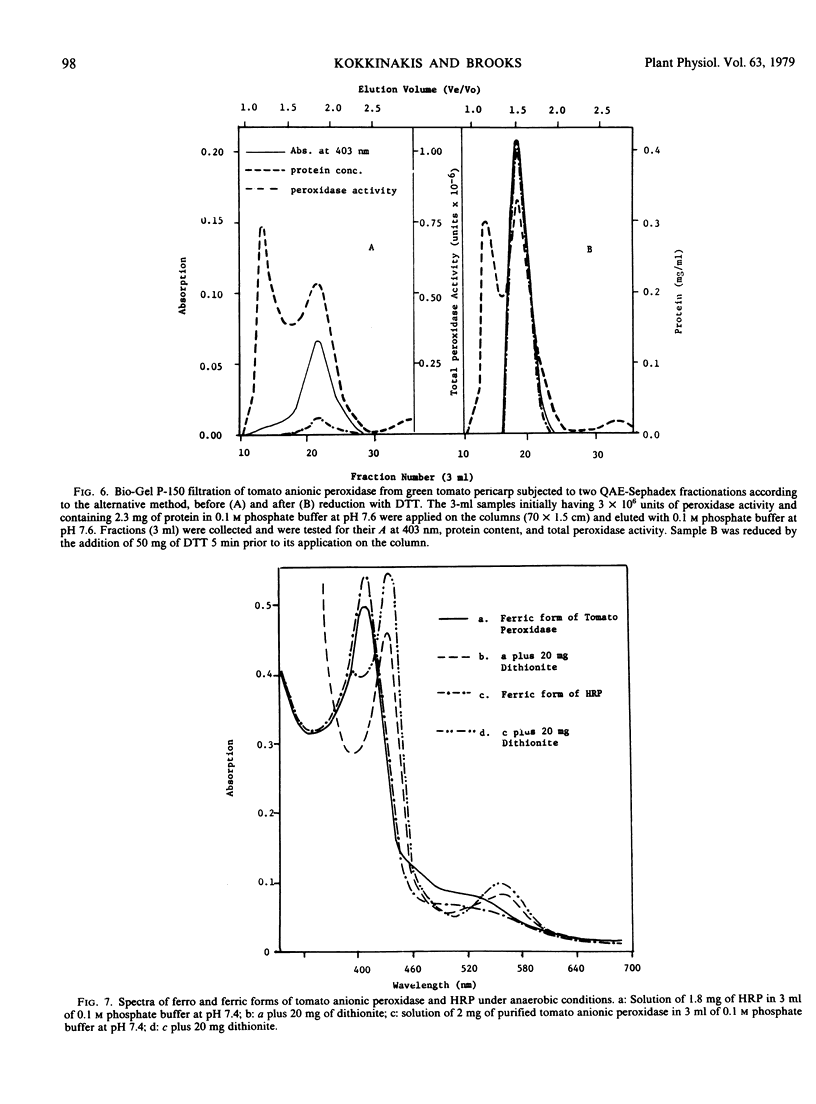
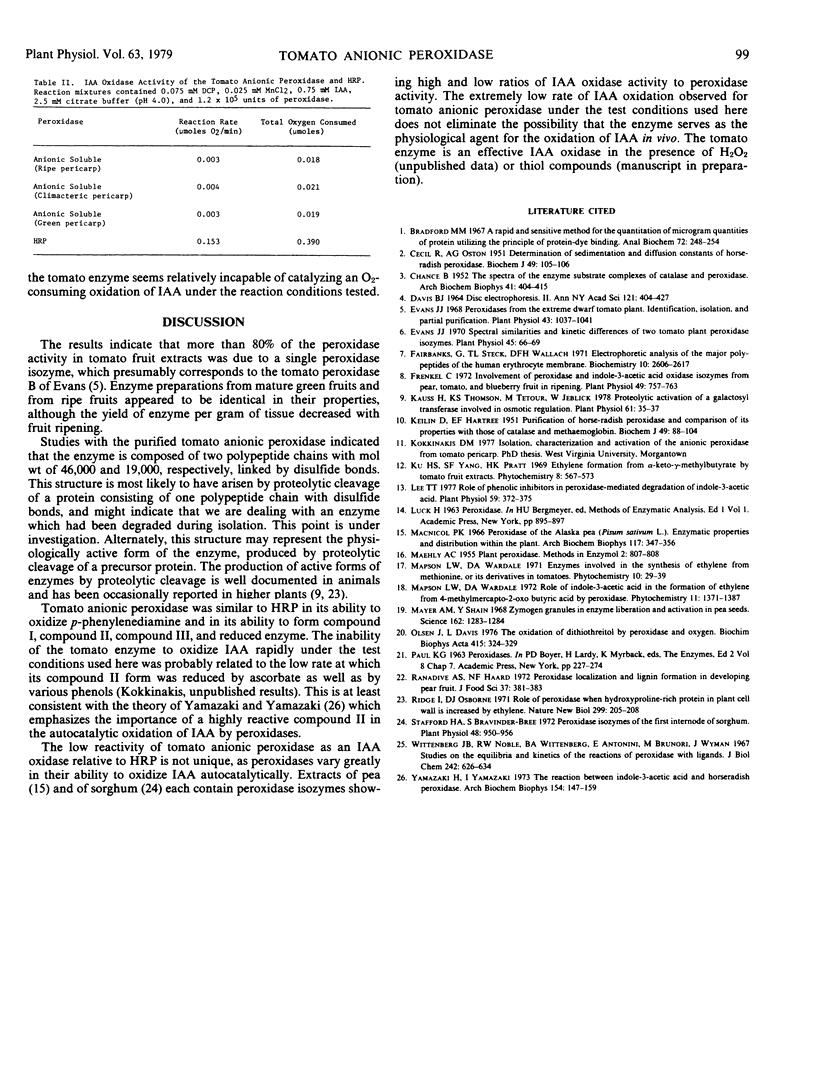
Selected References
These references are in PubMed. This may not be the complete list of references from this article.
- Bradford M. M. A rapid and sensitive method for the quantitation of microgram quantities of protein utilizing the principle of protein-dye binding. Anal Biochem. 1976 May 7;72:248–254. doi: 10.1016/0003-2697(76)90527-3. [DOI] [PubMed] [Google Scholar]
- CECIL R., OGSTON A. G. Determination of sedimentation and diffusion constants of horse-radish peroxidase. Biochem J. 1951 Jun;49(1):105–106. [PubMed] [Google Scholar]
- CHANCE B. The spectra of the enzyme-substrate complexes of catalase and peroxidase. Arch Biochem Biophys. 1952 Dec;41(2):404–415. doi: 10.1016/0003-9861(52)90469-4. [DOI] [PubMed] [Google Scholar]
- DAVIS B. J. DISC ELECTROPHORESIS. II. METHOD AND APPLICATION TO HUMAN SERUM PROTEINS. Ann N Y Acad Sci. 1964 Dec 28;121:404–427. doi: 10.1111/j.1749-6632.1964.tb14213.x. [DOI] [PubMed] [Google Scholar]
- Evans J. J. Spectral similarities and kinetic differences of two tomato plant peroxidase isoenzymes. Plant Physiol. 1970 Jan;45(1):66–69. doi: 10.1104/pp.45.1.66. [DOI] [PMC free article] [PubMed] [Google Scholar]
- Fairbanks G., Steck T. L., Wallach D. F. Electrophoretic analysis of the major polypeptides of the human erythrocyte membrane. Biochemistry. 1971 Jun 22;10(13):2606–2617. doi: 10.1021/bi00789a030. [DOI] [PubMed] [Google Scholar]
- Frenkel C. Involvement of Peroxidase and Indole-3-acetic Acid Oxidase Isozymes from Pear, Tomato, and Blueberry Fruit in Ripening. Plant Physiol. 1972 May;49(5):757–763. doi: 10.1104/pp.49.5.757. [DOI] [PMC free article] [PubMed] [Google Scholar]
- KEILIN D., HARTREE E. F. Purification of horse-radish peroxidase and comparison of its properties with those of catalase and methaemoglobin. Biochem J. 1951 Jun;49(1):88–104. doi: 10.1042/bj0490088. [DOI] [PMC free article] [PubMed] [Google Scholar]
- Kauss H., Thomson K. S., Tetour M., Jeblick W. Proteolytic activation of a galactosyl transferase involved in osmotic regulation. Plant Physiol. 1978 Jan;61(1):35–37. doi: 10.1104/pp.61.1.35. [DOI] [PMC free article] [PubMed] [Google Scholar]
- Lee T. T. Role of Phenolic Inhibitors in Peroxidase-mediated Degradation of Indole-3-acetic Acid. Plant Physiol. 1977 Mar;59(3):372–375. doi: 10.1104/pp.59.3.372. [DOI] [PMC free article] [PubMed] [Google Scholar]
- Macnicol P. K. Peroxidases of the Alaska pea (Pisum sativum L.). Enzymic properties and distribution within the plant. Arch Biochem Biophys. 1966 Nov;117(2):347–356. doi: 10.1016/0003-9861(66)90422-x. [DOI] [PubMed] [Google Scholar]
- Mayer A. M., Shain Y. Zymogen granules in enzyme liberation and activation in pea seeds. Science. 1968 Dec 13;162(3859):1283–1284. doi: 10.1126/science.162.3859.1283. [DOI] [PubMed] [Google Scholar]
- Olsen J., Davis L. The oxidation of dithiothreitol by peroxidases and oxygen. Biochim Biophys Acta. 1976 Sep 14;445(2):324–329. doi: 10.1016/0005-2744(76)90086-3. [DOI] [PubMed] [Google Scholar]
- Ridge I., Osborne D. J. Role of peroxidase when hydroxyproline-rich protein in plant cell walls is increased by ethylene. Nat New Biol. 1971 Feb 17;229(7):205–208. doi: 10.1038/newbio229205a0. [DOI] [PubMed] [Google Scholar]
- Stafford H. A., Bravinder-Bree S. Peroxidase isozymes of first internodes of sorghum: tissue and intracellular localization and multiple peaks of activity isolated by gel filtration chromatography. Plant Physiol. 1972 Jun;49(6):950–956. doi: 10.1104/pp.49.6.950. [DOI] [PMC free article] [PubMed] [Google Scholar]
- Wittenberg J. B., Noble R. W., Wittenberg B. A., Antonini E., Brunori M., Wyman J. Studies on the equilibria and kinetics of the reactions of peroxidase with ligands. II. The reaction of ferroperoxidase with oxygen. J Biol Chem. 1967 Feb 25;242(4):626–634. [PubMed] [Google Scholar]
- Yamazaki H., Yamazaki I. The reaction between indole 3-acetic acid and horseradish peroxidase. Arch Biochem Biophys. 1973 Jan;154(1):147–159. doi: 10.1016/0003-9861(73)90043-x. [DOI] [PubMed] [Google Scholar]


